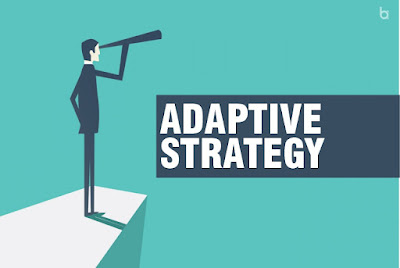Adaptive Strategy: A Cornerstone of Business Development
Do you execute adaptive strategy in your business? Your organization needs to be adaptable as a business owner, relying instantly on the obstacles facing business, the context, or the changes in the environment.
Organizing in the adaptive context demands an environmental monitoring and response process by collecting indicators for change and managing an experimental portfolio. Adaptive companies constantly change their manner of working by trying numerous new ways and then increasing and leveraging what is most promising before restarting the process. Superior qualities companies are more successful than their competitors by iterating faster and efficiently. So, here is all you need to know about adaptive strategy before establishing it in your business.
What is Adaptive Strategy?
Adaptive or agile strategy is a proactive decision that features adaptive planning, early implementation, development, ongoing enhancement, and fast and reliable change reaction. The strategy’s effective implementation is not separate but goes together.
Anthropologist Yehudi Cohen uses the term adaptive strategies to characterize the economic production system of a culture. Cohen stated that the main cause of similarities is they have a comparable adaptation strategy between two unrelated societies. Similar socio-cultural consequences are similar with identical economic reasons.
Key Components of Adaptive Strategy in Business
Enterprises acknowledge how important it is to have clear strategies. But it is not sufficient to comprehend the requirement. It is the adaptive quality of organizational tactics that matters. In this very turbulent corporate world with unparalleled perturbation, which has been hit by the COVID 19 epidemic. So, here are three key elements of an adaptive strategy.
1. Perception of Development

The first element of an adaptive strategy is the transparency of accomplishment. It is clear to understand how your plan is implemented concerning its original aims. And be ready to get answers to these questions fast enables you to evaluate well-informedly whether your plan needs to be adjusting to meet its goals. Companies must verify that the value initially anticipate is bring out by their strategies. Therefore, development awareness includes construction. If the plan is not in progress, of indicators that can warn management.
2. Strong Connection Among Both Planning and Execution

The effective adaptability of a company strategy typically depends on the flexibility of individual business units. Therefore, there must be a visible connection between business strategies and the particular actions aimed to implement this goal. Incorporations generally give a clear hierarchy of strategy implementation at all levels of the organism, if a policy is to be cleft into plans, sub-programs, and workstreams.
3. Susceptibility towards Preconceptions
The ability to react to elements that may have an impact on the entire implementation of the strategy is a significant justification for adaptive strategies. These factors are generally grouped as risk, hypothesis, problem, and dependence, or RAID items. When these RAID items are discovering, the influence of these factors on the implementation of your strategies. And the chance that they will be achieved should be identified. Every RAID item should then be prepared, if possible, for mitigation and action strategies.
How to improve the corporation highly adaptability?

By using an adaptive management style, you can’t ever achieve anything instantly. It is crucial to evolve into adaptability during the entire procedure. And fortunately, you may take various actions to lead a more flexible firm. So, here are several techniques to boost your business.
1. Construct a robust technological economy
Modernization is virtually always hapless to failure if you do not have a strong digital culture. And data reveals that 90% of digital transitions fail. If you want to become an adaptive company, you must have a culture of adaptation. Even if your team is unsure how much you want to evolve, it just won’t work.
So first, make sure your team not just understands, but embraces, and promotes communication before you hurry out to change your style of working. If your team does not take up new developments, find out why and how to help individuals remain engaged and involved once you know that.
2. Be guided by cognizance
You have to grasp ways to respond to demand if you want to become an adaptive business and to do so you have to execute on the information. The companies that have done the best since automation start to anticipate what people desire. They have done their study and made the appropriate modifications, regardless of whether this would make things easier or more powerful for their customers.
Undoubtedly, there are many methods to do this, but they all start and conclude with the proper data and the necessary technology to examine it. User experience, shifting market patterns, and product involvement are all important starters. But knowledge of the way your company is running itself should also be distributed.
3. Concentrating on quality
Adaptive firms aim to concentrate their energies actively on meaningful employment. You must be mindful of your inefficiencies, manage your distractions, and cut as many unproductive and low-value jobs as possible. Through constraining day-to-day distractions and routine chores, employees can focus on intellectually challenging and valuable tasks.
Once more, technologies here can give support. The monitoring of your time in business might help you uncover the inefficiencies in your company’s process. You can develop a more productive relationship with your technology by managing notifications and defining boundaries for your tools. And eliminating all your routine, low-cost duties such as timesheets, arranging meetings, and email management can allow you to work efficiently.

Comments